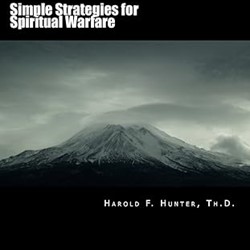23V12 – Preaching: Communicating Faith (Book Review)
(written by Dr. Kip Wehrman 08/03/2023)
Hello my friends. Thanks for joining me today for an @ the PUNLA coffee table. I would like to share with you a book I read by Tim Keller “Preaching: Communicating Faith in an Age of Skepticism”. I to share this with you as a potential resource that at least some of you might be interested in.
Let’s pray.
Okay the book is titled “Preaching: Communicating Faith in an Age of Skepticism” by Tim Keller. In the introduction, Keller defines the three levels of Word ministry or preaching. Level 3 is the public preaching of Christ in the Christian assembly. Level 1 is the informal conversation preaching of Christ in the form of wisdom, teaching, admonishing in small groups or one on one. Level 2 is somewhere between the informal conversations of level 1 and the formal sermons of level 3. Keller stresses the importance of each, “So there are three levels of Word ministry, and they are all crucial and support one another.“
Prologue: What is Good Preaching
The prologue is titled, “What is Good Preaching. In the prologue, Keller summarizes the “Secret to Great Preaching.” The secret is not the preacher or even the sermon preparation and content, the secret is always the Holy Spirit. The Apostle Paul said, “not simply with words but also with power, with the Holy Spirit and deep conviction” (1 Thessalonians 1:5). Keller than quickly outlines the main sections of the book; the Secret to Great Preaching, the Absolutely Perfect Preacher, Preaching Christ, Preaching to the Cultural Heart, and the Tasks of Preaching.
Part 1: Serving the Word
Chapter 1 is titled “Preaching the Word.” Keller begins this chapter with 1 Peter 4:11 “If anyone speaks, they should do so as one who speaks the very words of God.” Keller quotes, “In the first Protestant preaching manual, The Art of Prophesying (1592), William Perkins wrote, “The Word of God alone is to be preached, in its perfection and inner consistency.” Perkins describes a balance between scholarship and God’s inspiration. Next is expository and topical preaching. “What is the best way to do that?” Expository preaching is defined as the systematic explanation of the Scripture done systematically. The case for (usually) doing expository preaching is it allows the text to direct the preaching. Expository preaching is the best method for imprinting the reality of the Bible on the people better than its alternatives. There are dangers to avoid with expository preaching, including for example, “expository preachers must major in the text’s major ideas and not get lost in the details and tangents that misrepresent the biblical author.” Keller says, “It would be natural at this point to ask how effective the careful exposition of the Bible could possibly be in a culture that is becoming more and more averse to authority, particularly religious authority.” Keller quotes Spurgeon as saying that the Scripture is like a lion, so much time should be spent describing, defending, and arguing about it.
Chapter 2 is titled “Preaching the Gospel Every Time.” The message of the Bible can only be understood and explained within its context and based on how it fits into the Bible Canon. Keller identifies the two enemies of the gospel, 1) legalism and 2) antinomianism. Antinomianism is the idea that we can relate to God without obeying his Word and commands. Keller defines what he calls, “Non-Identical Twins from the Same Womb.” Keller means these two mind-sets of legalism and antinomianism. Legalism is rooted in a distorted view of God and obedience to God. Antinomianism results in concept of God as ungenerous and hard. Both make following God burdensome. Keller describes reasons why we should preach Christ every time. Next Keller outlines two dangers to avoid; 1) Preaching a text, even about Jesus, without really preaching the Gospel, and 2) Preaching “Christ” without really preaching the text.
Chapter 3 is titled “Preaching Christ from All of Scripture.” Keller describes how to preach Christ from every genre or section of the Bible. The next sections of this chapter details how to preach Christ through every theme of the Bible and how to preach Christ in every major figure of the Bible. Additionally, Keller demonstrates how to preach Christ from every major image in the Bible and how to preach Christ from Every deliverance story line. Then Keller concludes this chapter showing the importance of preaching Christ through our instincts. Keller stresses the importance of a systematic approach to preaching but cautions against being too rigid and predictable. Instead, Keller says that often the best way to perceive Scripture texts is with intuition or instinct.
Part 2: Reaching the People
Chapter 4 is titled “Preaching Christ to the Culture.” Keller describes how the secular society views the madness of Christianity. Keller describes the new changes in our culture which pose a challenge to traditional Christian approaches. Christians must be up to the challenge and adjust their content focus. This adjustment is not abandoning our principles but adapting to the fundamental cultural basis in order to confront the culture. Keller says, “Should Christian preachers or teachers change for the culture or challenge it?” A common understanding among missiologist is contextual communication or contextualization. Contextualization is resonating with the culture yet defying it. Keller outlines the following points, 1) Use accessible or well-explained vocabulary, 2) Employ respected authorities to strengthen your theses, 3) Demonstrate an understanding of doubts and objections, 4) Affirm in order to challenge baseline cultural narratives, 5) Make gospel offers that push on the culture’s pressure points, and 6) Call for gospel motivation. The first is the use of accessible or well-explained vocabulary which is a moving target in our culture. The preacher must employ words the hearer will clearly understand. Second is to employ respected authorities to strengthen your theses. This must include materials and sources which the listener trusts. Third is to demonstrate an understanding of doubts and objections. The preacher must be an educated critic of nonbelief. Fourth is to affirm in order to challenge baseline cultural narratives by providing Biblical themes, doctrines and truths to counter those narratives. Fifth is to make gospel offers that push on the culture’s pressure point resulting in Christ as the only happy ending to the cultural plotlines. Last, Keller provides a call for gospel motivation. By focusing on these forementioned points, the preacher can both build the Christians and evangelize the non-believers.
Chapter 5 is titled “Preaching and the (Late) Modern Mind.” Keller’s title is based on the book of the same name by P.T. Forsyth in 1907. Keller discusses how there is a hidden belief web in secular society. The late modern mind wants to draw on science and reason while trying to subtract God from their story. Keller continues this chapter with several narratives of late modernity. Keller then discusses ways to engage each. First engaging the identity narrative, the sovereign self, by contrasting it with the process of sanctification, of growth into the likeness of Christ. It is also, then, the process of becoming the true-self God created us to be. Another idea Keller discusses is how to engage the society narrative and absolute negative freedom, by expounding how obedience to God’s commands results in liberation for the rules of the world. Next Keller discusses how to engage the morality/justice narrative and self-authorizing morality, by addressing the differences between the material and non-material realms. Last was engaging the history and rationality narratives and the science as the secular hope, by showing that there is in fact no hope in science. Keller concludes this chapter with a discussion about getting overwhelmed by the idea of “taking on” the cultural narratives.
Chapter 6 is titled “Preaching Christ to the Heart.” Keller begins this chapter with a discussion stressing the importance of the heart. Modern readers misunderstand this fundamental term in the Bible. Therefore, it is critical to clearly define how the Bible uses this term. Next the chapter addressed the need to use “affections” or a sense if beauty and excellence during preaching. Using these affections can help preaching make truth real to the hearts of the listeners. This had the potential to change them in their seats. Keller then outlines how to preach to the heart of a listener by allowing your message to be affectionate, imaginative, wondrous, memorable, Christocentric, and Practical
Part 3: In Demonstration of the Spirit and of Power
Chapter 7 is titled “Preaching and the Spirit.” Keller begins this chapter by saying that “Your listeners will be convinced by your message only if they are convinced by you as a person.” Keller stresses how ministry amplifies people’s spiritual character. He continues to demonstrate how only with a deep godly character from the transforming power of the Holy Spirit, can contradictory qualities be united in the natural man. Next Keller discusses what he calls the framework of the three texts; Biblical text, listener’s context, and subtext of your heart as preacher. The test of the third text includes using a subtext of reinforcement, a subtext of performance, a subtext of training, or a subtext of worship. Keller puts together his final thoughts on what it looks like to preach from the heart with four points; 1) you preach powerfully, 2) you preach wondrously, 3) you preach authentically, and 4) you preach Christ-adoringly. Keller ends the book by encouraging us to be a voice. “If you proclaim Christ and not yourself and let God’s Word come to people through you, you can also become a voice, like John did. It doesn’t matter if in yourself you feel weak. All the better.”
Let’s pray.
I’m not a preacher or pastor but I appreciated many of the Tim Keller’s concepts and I think I will use them in my ministry. If you are looking for a book which will help you build techniques and arguments for communicating our faith, this is a good resource for you.


